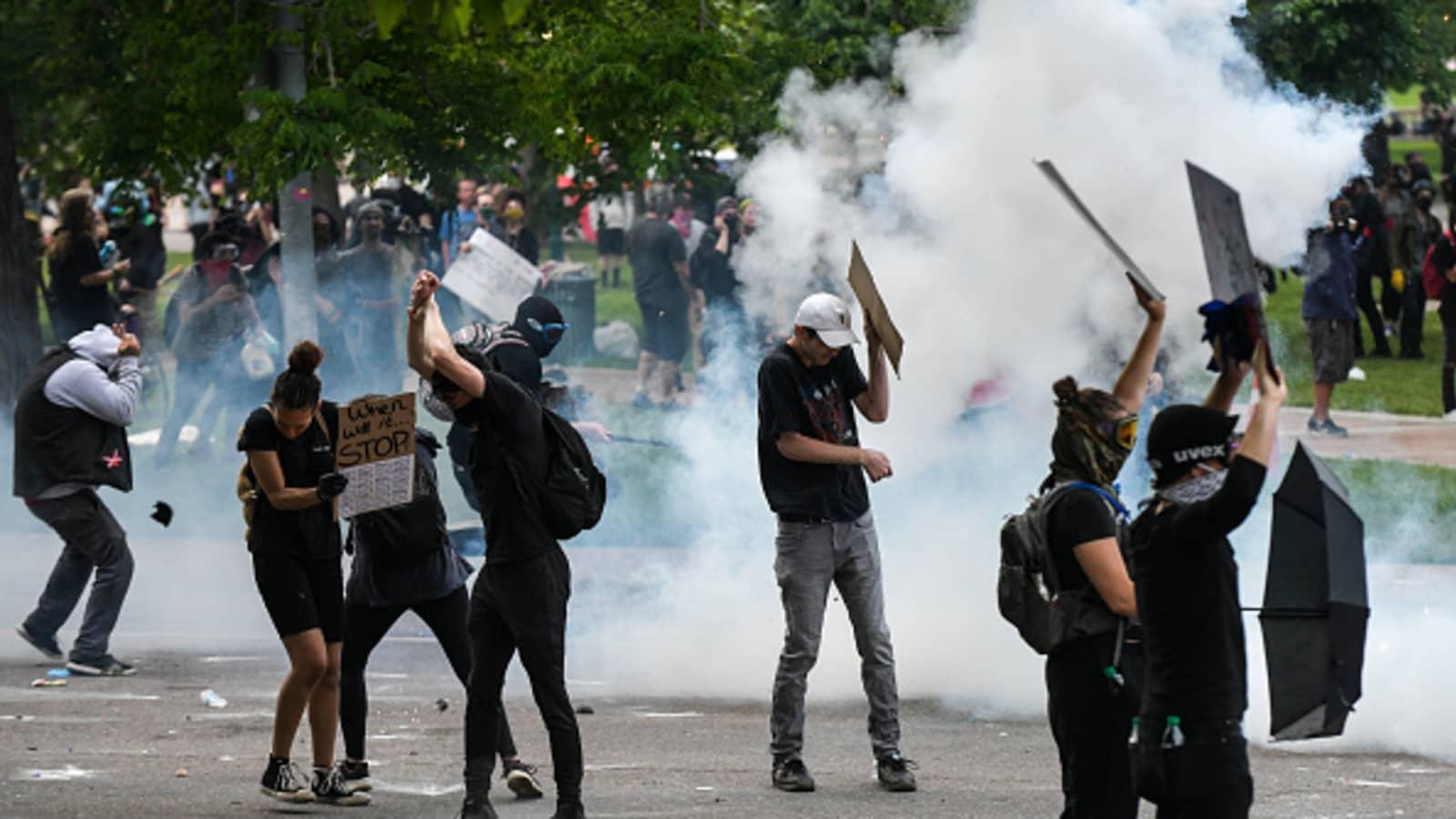Police brutality consists of various acts of police that violate human rights, including beatings and racial abuse. In the United States, there has been a perceived and observed police injustice towards minority communities, especially Blacks. The brutal killing of George Floyd, an unarmed Black man, in 2020 amidst the COVID-19 pandemic spiked more tension and protests across the United States as citizens protested for their rights. The protests during the pandemic caused epidemiologists to worry about increased infections as citizens broke social isolation protocols to go out in the streets to protest. Moreover, there were increased talks on the need to defund the police and prosecute the police officers in the incident. To date, minority communities, particularly Blacks, fear police injustice as protests and efforts to uphold human rights and restrain police from such acts continue. The brutal police killing of George Floyd, a Black man, amidst the COVID-19 pandemic, protests, and riots caused epidemiologists and medical personnel to worry over the possible infection surge while residents fought for their rights.
The unlawful use of police force can lead to extreme injury or death to its victims. Studies indicate that whereas white citizens comprised the majority of victims of police brutality, blacks had the highest fatality rate while unarmed (Njoku et al. 2). Therefore, Blacks were more affected by the pandemic as the protests in mainly black neighborhoods exposed the vulnerabilities of Blacks. Susceptibility to diseases like diabetes and hypertension is shared among Blacks, putting them at risk of more suffering and difficulty recovering from COVID-19 infections. Further, the Black population has been a victim of systemic racism and barriers in the healthcare system. Therefore, most Blacks were uninsured during the pandemic and had limited access to quality healthcare. The exposure to the pandemic made the Black population more vulnerable to viral infection and its effects than other communities in the United States.
The onset of the COVID-19 pandemic unveiled the existing police brutality targeting Blacks and exposed the racial disparities in health. Due to tension among Black communities over the police presence, any sight of police patrolling social distancing protocols increased the likelihood of deadly encounters since police presence became a stressor (Njoku et al. 3). Additionally, racial health disparities were apparent as most COVID-19 testing centers were located in predominantly white neighborhoods while very few were available in black communities (Njoku et al. 3). The limited access of Black communities to quality health facilities and lack of medical insurance exposed the population to the adverse effects of the pandemic due to increased agents of exposure to the infection. For instance, the use of tear gas for crowd control in dispersing protesters exposed protesters to respiratory diseases such as bronchitis hence exaggerating the risk of the COVID-19 pandemic. Therefore, apart from suffering the effects of police brutality, Black communities suffered disparities in health systems, making them more susceptible to the infection and effects of the COVID-19 disease.

The COVID-19 pandemic, a severe medical emergency, called for serious prevention measures that the brutal murder of George Floyd compromised mainly due to citizens’ protests in the streets, exposing communities to criminal activities. Health professionals recommended social distancing as one of the most effective prevention measures against the Covid-19 Pandemic. However, due to protests against police killings, citizens went to the streets to protest. An overlooked aspect of the ensuing protests during critical health and economic time was the increased crime rates. In New York State, for instance, data indicated a rise in felonies such as robbery and shooting incidents (Koppel et al. 16). The stay-at-home restrictions that mandated social distancing provided a chance to reduce crime in major towns and cities. However, the Black Lives Matter (BLM) protests provided opportunities for crime. Given that people had to leave their houses unguarded, crimes against property increased. Moreover, crimes against people increased, for instance, assault. Therefore, police brutality during the COVID-19 pandemic increased community vulnerability to crime and insecurity.
As communities continue to grapple with the effects of the COVID-19 pandemic, there is a need to eliminate existing disparities that may increase community vulnerabilities efficiently. By eliminating barriers such as injustice and racial disparities in health systems, the United States government can ensure its citizens have access to equitable services. Moreover, there is a need to create attention to the effects of police violence while advocating for justice in law enforcement to eliminate police brutality toward Black communities (Njoku et al. 5). The police should strictly adhere to the stipulated human rights provisions to preserve human rights and follow the correct avenues of justice in case of law-breaking.
In the final analysis, health and racial disparities have been a serious challenge in the country for a while. The increased killing of unarmed Blacks during the COVID-19 pandemic exposed multiple systemic problems within the United States. First, it became apparent that while white people suffered police brutality, more blacks suffered fatalities. Further, police brutality during the COVID-19 pandemic exposed the systemic health disparities against minority communities, especially Blacks. The BLM protests across the country also increased the insecurity rates in American communities as criminals took advantage of the chaotic lawlessness.
Works Cited
Koppel, Stephen, et al. “Disentangling the Impact of Covid-19: An Interrupted Time Series Analysis of Crime in New York City“. American Journal of Criminal Justice, 2021, pp. 1-27. Web.
Njoku, Anuli, et al. “Police Brutality Against Blacks in the United States and Ensuing Protests: Implications for Social Distancing and Black Health During COVID-19“. Journal of Behavior in the Social Environment, vol. 31, no. 1, 2020, pp. 262-270. Web.
Lewis, Sophie. “Denver Police Ordered to Stop Using Tear Gas and Rubber Bullets on Protesters.” CNBC News, 2020. Web.